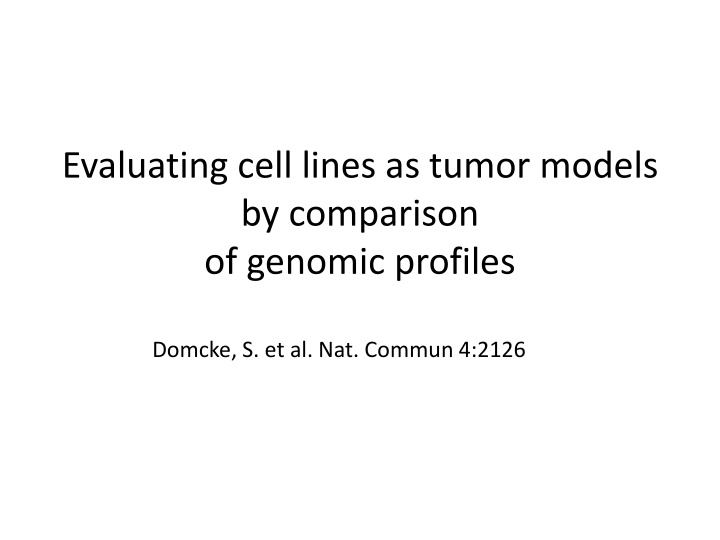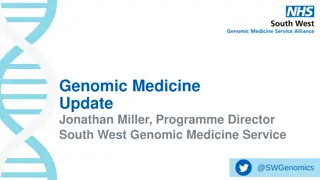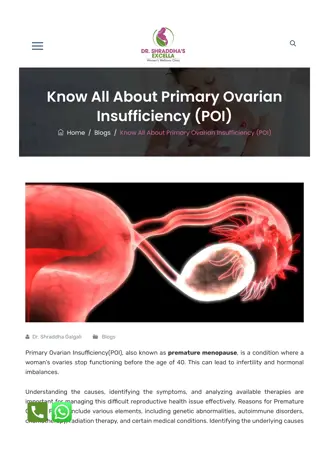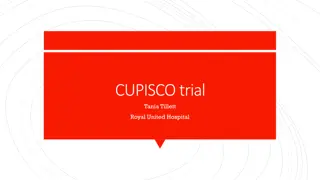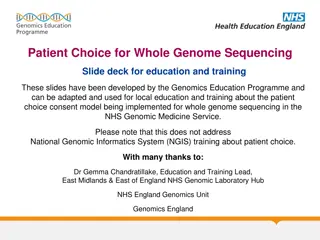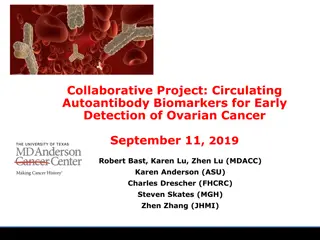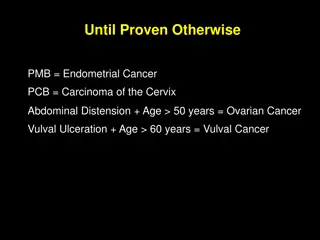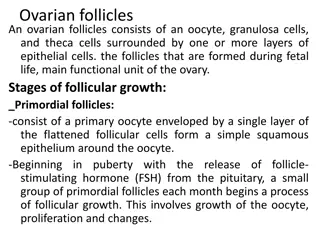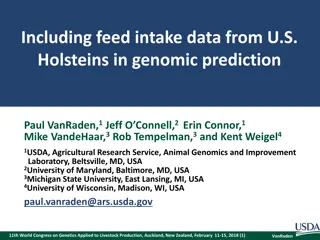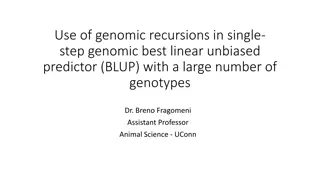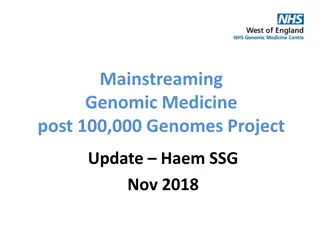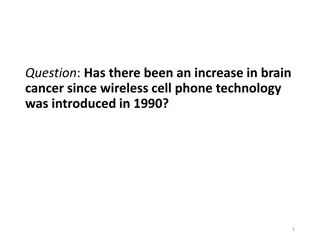Genomic Profiling of Ovarian Cancer Cell Lines for In Vitro Models
This study evaluates genomic differences between high-grade serous ovarian cancer (HGSOC) and common cell line models, aiming to identify suitable in vitro models. Over 300 HGSOC tumor samples and 47 ovarian cancer cell lines were analyzed, revealing key insights into genomic profiles and cell line suitability.
Uploaded on Feb 26, 2025 | 3 Views
Download Presentation

Please find below an Image/Link to download the presentation.
The content on the website is provided AS IS for your information and personal use only. It may not be sold, licensed, or shared on other websites without obtaining consent from the author.If you encounter any issues during the download, it is possible that the publisher has removed the file from their server.
You are allowed to download the files provided on this website for personal or commercial use, subject to the condition that they are used lawfully. All files are the property of their respective owners.
The content on the website is provided AS IS for your information and personal use only. It may not be sold, licensed, or shared on other websites without obtaining consent from the author.
E N D
Presentation Transcript
Evaluating cell lines as tumor models by comparison of genomic profiles Domcke, S. et al. Nat. Commun 4:2126
Motivation Problem: Genomic differences between cancer cell lines and tissue samples TCGA and CCLE provide molecular profiles for tumor samples and cell lines Compared high-grade serous ovarian cancer (HGSOC) to genomic profiles to identify suitable cell lines for in vitro models
Ovarian Cancer Over 100,000 women die of ovarian cancer each year 5th leading cause of cancer death Divided into 4 major histological subtypes: Serous (study s focus) Endometrioid Clear Cell Mucinous carcinoma
Common cell line models for ovarian cancer and HGSOC are: SK-OV-3, A2780, OVCAR-3, CAOV3 and IGROV1 Need for well-characterized cell line models for cell types Found differences between most common models and majority of HGSOC samples
Analyzed 316 HGSOC tumor samples from TCGA and 47 ovarian cancer cell lines from CCLE DNA copy-number, mutation and mRNA expression data Fraction genome altered (FGA): CN=log2(sample intensity/reference intensity) L(i) is length of segment i T is threshold value of Cniabove which segments are altered - T= 0.2 for TCGA samples - T=0.3 for CCLE cell lines
Suitability of HGSOC Models S = A + B 2 C D/7 A = Correlation with mean CNA of tumors B = 1 for cell lines with TP53 mutation or else 0 C = 1 for hypermutated cell line or else 0 D = # of genes mutated in 7 non-HGSOC genes
Future Directions Drug response profiles using accurate cell line models with known alterations for patient selection in clinical trials Perform preclinical drug screens for more- informed patient therapy Any others?
